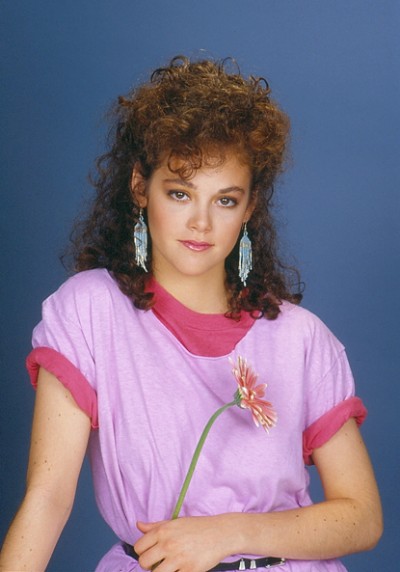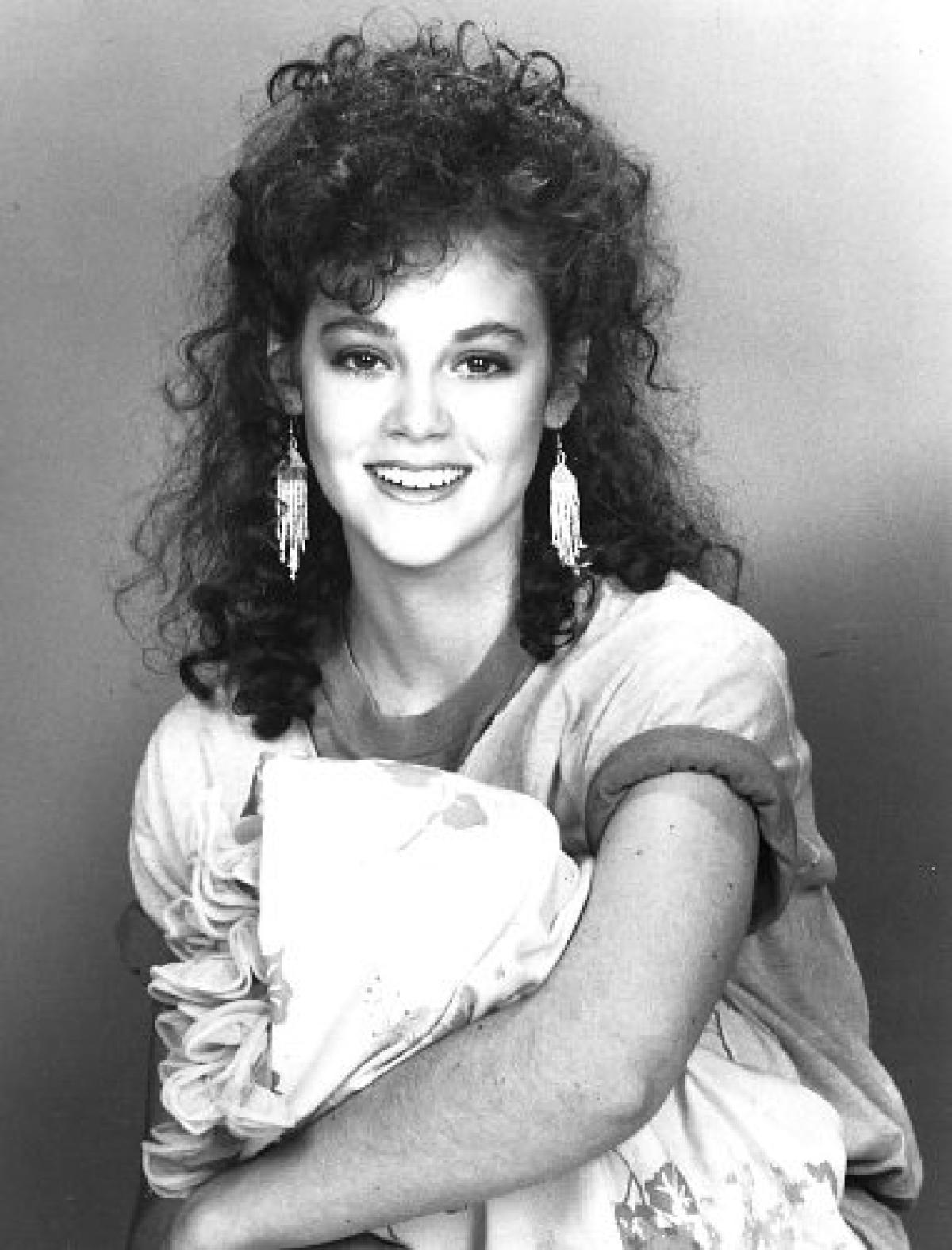Rebecca Schaeffer (Rebecca Lucile Schaeffer)

Schaeffer was born in Eugene, Oregon, the only child of Danna (née Wilner), a writer and instructor at Portland Community College, and Dr. Benson Schaeffer, a child psychologist. She was raised in Portland where she attended Lincoln High School. She initially had aspirations to become a rabbi but began modeling during her junior year in high school. Schaeffer appeared in department store catalogs and also appeared in television commercials and as an extra in a television film. In August 1984, Schaeffer’s parents allowed her to move to New York City by herself to pursue a modeling career. While working in New York, she attended Professional Children’s School. In late 1984, Schaeffer landed the role of Annie Barnes on ABC’s One Life to Live, for a stint that lasted six months. During this time, she attempted to further her modeling prospects. At 5 ft 7 in (1.70 m), she was considered too short for high fashion modeling and struggled to find work. In 1985, Schaeffer moved to Japan in hopes of finding more modeling jobs, but still encountered difficulty due to her height. She returned to New York City and decided to focus on an acting career.
In 1986, Schaeffer won a small role in Woody Allen’s Radio Days, but her performance was deleted. She continued modeling and also worked as a waitress. After landing the cover of Seventeen magazine, she caught the attention of television producers who were casting for a new sitcom, My Sister Sam, starring Pam Dawber. Schaeffer tested for and won the role of Patricia “Patti” Russell, a teenager who moves from Oregon to San Francisco to live with her 29-year old sister Samantha “Sam” Russell after the death of their parents. The series was initially a hit, ranking in the top 25, but was canceled halfway through its second season in April 1988 due to falling ratings. After My Sister Sam, Schaeffer had supporting roles in Scenes from the Class Struggle in Beverly Hills, The End of Innocence and the television film Out of Time. She also served as a spokesperson for the children’s charity Thursday’s Child.
On July 18, 1989, Schaeffer was fatally shot by Robert John Bardo, an obsessed fan who had been stalking her for three years. Bardo had become obsessed with Schaeffer after the previous target of his obsession, child peace activist Samantha Smith, died in a plane crash in 1985. Bardo wrote numerous letters to Schaeffer, one of which was answered by an employee of Schaeffer’s fan service. In 1987, Bardo traveled to Los Angeles hoping to meet with Schaeffer at the My Sister Sam set, but was turned away by Warner Bros. security. Angry, he returned a month later armed with a knife but security guards prevented him from gaining access to the actress a second time. Bardo returned to his native Tucson and lost focus on Schaeffer for a while and became preoccupied by pop singers Debbie Gibson and Tiffany.
In 1989, after viewing Schaeffer in the black comedy film Scenes from the Class Struggle in Beverly Hills in which she appeared in bed with a male actor, Bardo became enraged and decided that Schaeffer should be punished for becoming “another Hollywood whore”. After learning that Arthur Richard Jackson, a man that stalked and stabbed actress Theresa Saldana in 1982, had used a private investigator to obtain Saldana’s address, Bardo approached a detective agency in Tucson and paid them $250 to find Schaeffer’s home address in California Department of Motor Vehicles (DMV) records. Bardo’s brother helped him get a Ruger GP100 .357-caliber handgun because he was underage (Bardo was 19 years old at the time).
Bardo traveled to Los Angeles a third time and, after locating Schaeffer’s apartment, roamed the neighborhood asking passersby if Schaeffer actually lived there. Certain that the address was correct, he approached the porch and rang the doorbell. Schaeffer, who was preparing for an audition for a role in The Godfather Part III, answered the door. Bardo showed Schaeffer a letter and autograph she had previously sent him and, after a short conversation, Schaeffer asked Bardo not to come back to her home again. He then went to a local diner nearby and had breakfast. An hour later, Bardo returned to Schaeffer’s apartment for a second time. Schaeffer answered the door again with “a cold look on her face,” Bardo later said. Bardo pulled out a gun from a brown paper bag and shot her in the chest at point-blank range in the doorway of her apartment building. Schaeffer screamed and collapsed in her doorway as Bardo fled. A neighbor phoned paramedics, who arrived to transport her to Cedars-Sinai Medical Center. Schaeffer was pronounced dead thirty minutes after her arrival. The next day, Bardo was arrested by Tucson Chief of Police, Peter Ronstadt, older brother of Linda Ronstadt, after motorists reported a man running through traffic on Interstate 10. He immediately confessed to the murder.
Bardo was tried by prosecutor Marcia Clark, who later became known for her role in the O. J. Simpson murder case. Convicted of capital murder in a bench trial, Bardo was sentenced to life in prison without the possibility of parole.
Born
- November, 06, 1967
- USA
- Eugene, Oregon
Died
- July, 18, 1989
- USA
- Los Angeles, California
Cause of Death
- Gunshot by stalker
Cemetery
- Ahavai Sholom Cemetery
- Portland, Oregon
- USA



